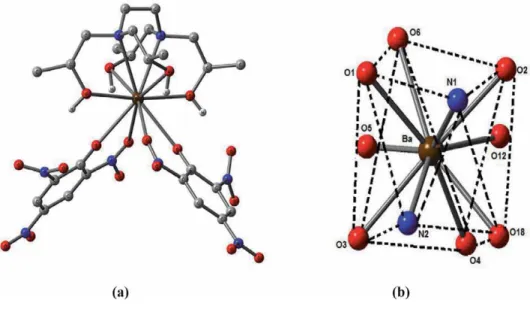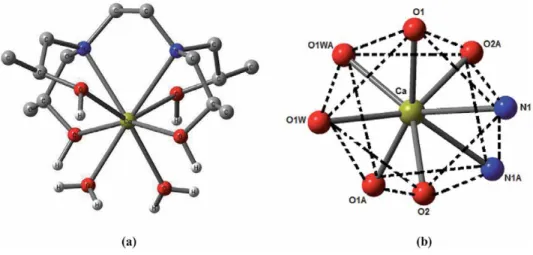Today he is a professor at the Department of Chemistry and Physics of the State University of Minas Gerais (UEMG). In fact, the goal in DFT is to find an analytical form for the functional.
Introduction
Short points in pressure
The modifications in crystalline material are associated with spatial groups; it is very interesting because the applied pressure does work on the crystalline structure that deforms the chemical bonds from "pushing" the atoms or molecules. In the irreversible process, the applied load causes a permanent deformation or fracture of the crystalline structure.
High pressure and density functional theory
In the field of materials chemistry, the phase transitions of applied external pressures are investigated to modify electrical, optical, magnetic and mechanical properties. The phase transitions under pressure are simulated due to geophysical processes, piezoelectric technological devices, resistive materials and magnetic phase transitions.
Conclusions
This chapter is distributed under the terms of the Creative Commons Attribution License (http://creativecommons.org/licenses/. Proceedings of the National Academy of Sciences of the U.S.A., v. Theoretical studies of the bulk modulus in the tetracubic transition of PbTiO3 material.
Computational details
A predominant 1:1 complexation was also observed in alkali and alkaline earth metal complexes of the tetra- and pentapod teeth. The stability constants of the therapods are generally lower than those of the corresponding tripods due to more severe steric hindrance to complexation [7].
Geometrical structures 1 Results and discussion
HOMO-LUMO analyses
It has been observed in the present computational study that the dinitrophenolate complexes are softer than trinitrophenolate, and among the latter, [Ca(THEEN)(PIC)]+(1) exhibits the least softness. It is relevant to mention here that the complex (1) has THEEN ligand while THPEN is the ligand in the rest of the complexes (2-6).
Spectral data
The coordination number of the title s-block complexes varies from 7 to 10 in the present work. Spectral and structural studies of the anti-cancer drug Flutamide by density functional theoretical method. Y system, the structural parameters of ionic liquids are quite different, and only the polarizability (α) decreases gradually by increasing the length of the alkyl chain.
The results showed that the variations of the EHOMO, hardness (η) and dipole moment (μ) are in agreement with the electrochemical experiments. There is no systematic analysis of the properties of different surfaces of iron, but it simply selects a surface as the adsorption surface of ionic liquid.
Computational method
The geometry optimization and the frequency analysis of the studied ionic liquid molecules were performed and the stable geometry was obtained. In general, the level of the EHOMO value determines the ability to supply electrons to the outside. In general, higher μ will make the molecules more easily adsorbed on the surface of carbon steel [40], and the effectiveness of the molecular inhibitor will increase accordingly.
However, the dipole moment reflects the global polarity of the molecules and not the polarity of the bonds within the molecule. The nucleophilic and electrophilic behavior of the molecule was studied by analyzing its Fukui index distribution.
Results and discussion
It can be seen from Figure 3 that the electrophilic attack index of these four ionic liquid molecules is mainly distributed on the Cl atom with the HOMO. Ac>[C4mim]Ac>[C2mim]Ac, indicating that [C8mim]Ac adsorbs more easily on the iron surface. The LUMO is mainly distributed in the imidazole ring in the same way as the [Cnmim]Cl system and the [Cnmim]Ac system, indicating that the imidazole ring of the cation can easily accept electrons from the iron surface.
It is further stated that the oxygen-containing group readily forms a coordination bond with the d orbital of the iron surface and is stably adsorbed on the iron surface. Cl is mainly distributed in the Cl atom, and 2C (the number of atoms is shown in Figure 1) also has a small amount of distribution.
![Figure 2 shows the equilibrium geometry, HOMO and LUMO distribution of [C n mim]Cl (n = 2, 4, 6, 8) system obtained by B3LYP/6-311++G(d, p) method](https://thumb-ap.123doks.com/thumbv2/1libvncom/9201439.0/50.765.127.637.81.338/figure-shows-equilibrium-geometry-homo-distribution-obtained-method.webp)
Conclusion
The global hardness (η) of [Omim]BF4 and [Omim]TFO is larger, the global softness (S) is smaller, and the electrophilic index (ω) is larger, indicating that [Omim]BF4 and [Omim]TFO are ionic liquids with better corrosion inhibition performance. Effect of organic anions in ionic liquids as corrosion inhibitors of steel in sulfuric acid solution. Experimental and quantum chemical studies of some bis(trifluoromethyl-sulfonyl)imidazolium imide-based ionic liquids as corrosion inhibitors for mild steel in hydrochloric acid solution.
Adsorption, thermodynamic and quantum chemical studies of 1-hexyl-3-methyl-imidazolium-based ionic liquids as corrosion inhibitors for mild steel in HCl. Experimental and theoretical studies on some selected ionic liquids with different cations/anions as corrosion inhibitors for mild steel in acidic environment.
Computational methodology
- Calculation of global reactivity descriptors
- Calculation of the pKa of the clavanins A–E peptides
- Local reactivity descriptor calculation
- Bioavailability and bioactivity scores
Def2TZVP/H2O model chemistry was used in the re-optimization of the five lowest energy conformers. ChemAxon Calculator plugins were used in deriving the molecular structures and bioactivity properties of the conformers. Graphical representation of the optimized molecular structures of the marine antimicrobial peptides of the clavanin family: (a) Clavanin A, (b) Clavanin B, (c) Clavanin C, (d) Clavanin D, and (e) Clavanin E.
The computational results of the pKa values for the clavanin molecules are shown in Table 3. Global reactivity descriptions of the clavanins A-E molecules calculated with the MN12SX/Def2TZVP/H2O model chemistry.

Materials and method 1 Materials
Computational details
Depending on their chemical structure, NSAIDs are broadly divided into two main classes as non-selective COX inhibitors and selective COX-2 inhibitors. Classification based on chemical structure is non-selective COX inhibitor and selective COX-2 inhibitor [2-5]. Non-selective COX inhibitors are salicylates, propionic acid derivatives, enolic acid derivatives (oxicam), anthranilic acid derivatives, selective COX-2 inhibitors, sulfonanilide and others.
While COX-2 is considered an inducible isoenzyme, although there is some constitutive expression in the kidney, brain, bone, female reproductive system, and gastrointestinal tract. In an attempt to elucidate a deeper insight into the physicochemical properties of 2-phenylpropanoic acid-profen drugs, we present a detailed discussion of quantum calculations and predictions based on their structural geometry, frontier molecular orbitals nonlinear optical (NLO) properties were performed for all selected compounds using B3LYP/.
Results and discussion 1 Molecular geometry
- Thermo-chemical properties
- Frontier molecular orbital analysis
- Global descriptive parameters
- Hyperpolarizabilities, polarisabilities and dipole moment
- Molecular docking
3D protein-ligand interactions of the ligands (a) ketoprofen, (b) fenoprofen, (c) flurbiprofen, and (d) ibuprofen in the active site of COX-2. 2-D protein-ligand interactions of the ligands: (a) ketoprofen, (b) fenoprofen, (c) flurbiprofen and (d) ibuprofen in the active site of COX-2. 3D protein-ligand interactions of the ligands (a) ketoprofen, (b) fenoprofen, (c) flurbiprofen, (d) ibuprofen in the active site of COX-1.
2-D protein-ligand interactions of the ligands (a) ketoprofen, (b) fenoprofen, (c) flurbiprofen and (d) ibuprofen in the active site of COX-1. Non-Equilibrium Comparison of State in the Approximation of the Local Density Functional and Sy.
Non-equilibrium equation of state in a local density approximation If the energies of colliding heavy ions are less than 300 MeV per nucleon (pion
As a result, the non-equilibrium equation of state is found in the approximation of the local density function. The absolute thresholds for pion production are ENN¼ 2mπþm2m2π ≈290 MeV in nucleon-nucleon collisions, ENA≈mπ≈140 MeV in nucleus-nucleus collisions and EBA¼m2πþ2 AþB¼ABmð in Þuslli with nucleon Þm ≈mπ≈140 MeV B¼12, where mπ is the mass of the pion and m is the mass of the nucleon. In the case of low energies, the hydrodynamics must be modified to take into account the non-equilibrium EOS, which describes the transition from the initial non-equilibrium state to the local thermodynamic equilibrium state.
The absolute thresholds for pion production are ENN¼ 2mπþm2m2π≈290 MeV in nucleon-nucleon collisions, ENA≈mπ≈140 MeV in nucleon-nucleus collisions, and EBA¼m2πþ2 AþB2ABmð in Þms0πm B2ABmð Þms0πm ¼12, where mπ is the mass of the pion and m is the mass of the nucleon. However, we define it more traditionally as τ¼λ=υT, where λ is the mean free path of nucleons at a given nucleon density, which is assumed to be equal to the mean distance between nucleons, and υ is the mean Fermi thermal motion speed of nucleons.
Hydrodynamic stage
In the compression process, when the shock wave reaches the boundaries of the hot spot, the density reaches its maximum value. The dependence of the maximum compression ratio ρ=ρ0 at the shock wave front (solid line) on the collision energy of nuclei E0 is shown in Figure 1. We calculated the dependence of the maximum compression ratio on energy for E0>100 MeV per nucleon.
A compressed and heated hot spot (a sphere of radius R) expands when the shock wave reaches the boundaries of the system. The dependence of the maximum compression ratioρ=ρ0 on the collision energy E0 obtained during the interaction between the overlapping regions of colliding nuclei for the case with the relaxation factor q calculated by us (solid line), for the case where the factor q¼0 (dotted line) and for the case where q¼1 (dotted line).
Double differential cross sections of the emission of protons and pions: comparison with the experimental data
Double differential proton and pion emission cross sections: comparison with experimental data. Double Differential Proton and Pion Emission Cross Sections: Comparison with Experimental Data pions: Comparison with Experimental Data. The proton (pion) emission cross section is obtained from the condition that the number of particles fd3!pan and the value d3!p=E are relativistic.
In addition to this contribution, we considered the contribution of proton (pion) emission due to the fusion of non-overlapping regions of colliding nuclei. In this case, the effect of viscosity on the calculated cross-section of emitted pions is stronger for more asymmetric combinations of colliding nuclei, when the contribution of pion emission from the hotspot predominates.
Conclusions
The differential cross sections of proton emission and subthreshold pion production in heavy ion collisions are uniformly described with the same fixed parameters of the equation of state and with the same approach as in previous articles [11–13], which describe the differential cross sections for the production of protons and light fragments. This made it possible to describe the differential cross sections of the emission of protons (pions) in collisions of nuclei in different combinations. Emphasizing this feature of our approach can be useful in comparison with other methods of pion production in heavy ion collisions, for example [21, 22] based on the solution of the Vlasov-Uling-Uhlenbek equation.
However, this channel appears on the higher energy tails of the pion energy spectra [23]. Calculation of heavy ion collisions under the hydrodynamic approximation with a non-equilibrium equation.



![Table 2 shows the global activity parameters of [C n mim]Cl system obtained by B3LYP/6-311++G(d, p) method](https://thumb-ap.123doks.com/thumbv2/1libvncom/9201439.0/50.765.109.653.442.532/table-shows-global-activity-parameters-obtained-lyp-method.webp)
![Figure 3 shows the Fukui index f distribution of four ionic liquid molecules in [C n mim]Cl system, with the electrophilic attack index distribution on the left and the nucleophilic attack index f + distribution on the right](https://thumb-ap.123doks.com/thumbv2/1libvncom/9201439.0/51.765.110.650.84.196/figure-fukui-distribution-molecules-electrophilic-distribution-nucleophilic-distribution.webp)
![Figure 3 shows the Fukui index f distribution of four ionic liquid molecules in [C n mim]Cl system, with the electrophilic attack index distribution on the left and the nucleophilic attack index f + distribution on the right](https://thumb-ap.123doks.com/thumbv2/1libvncom/9201439.0/52.765.127.645.674.959/figure-fukui-distribution-molecules-electrophilic-distribution-nucleophilic-distribution.webp)
![Table 4 shows the global active parameters of [C n mim]Ac system obtained by B3LYP/6-311++G(d,p) method](https://thumb-ap.123doks.com/thumbv2/1libvncom/9201439.0/53.765.110.652.705.793/table-shows-global-active-parameters-obtained-lyp-method.webp)
![Table 4 shows the global active parameters of [C n mim]Ac system obtained by B3LYP/6-311++G(d,p) method](https://thumb-ap.123doks.com/thumbv2/1libvncom/9201439.0/54.765.125.648.762.974/table-shows-global-active-parameters-obtained-lyp-method.webp)
![Table 6 shows the global activity parameters of [Omim]Y ionic liquids obtained by B3LYP/6-311++G(d, p) method](https://thumb-ap.123doks.com/thumbv2/1libvncom/9201439.0/55.765.147.619.81.263/table-shows-global-activity-parameters-liquids-obtained-method.webp)